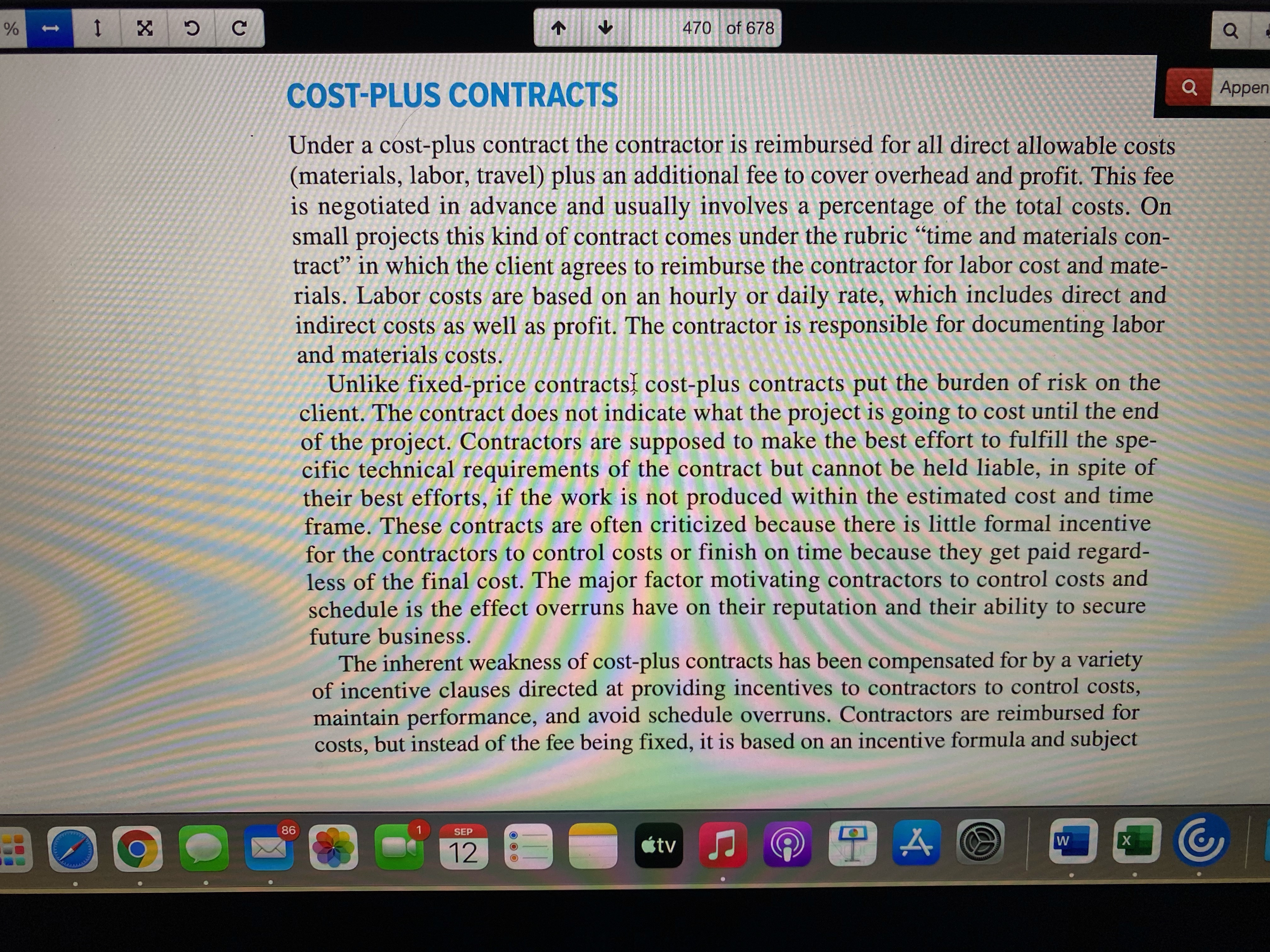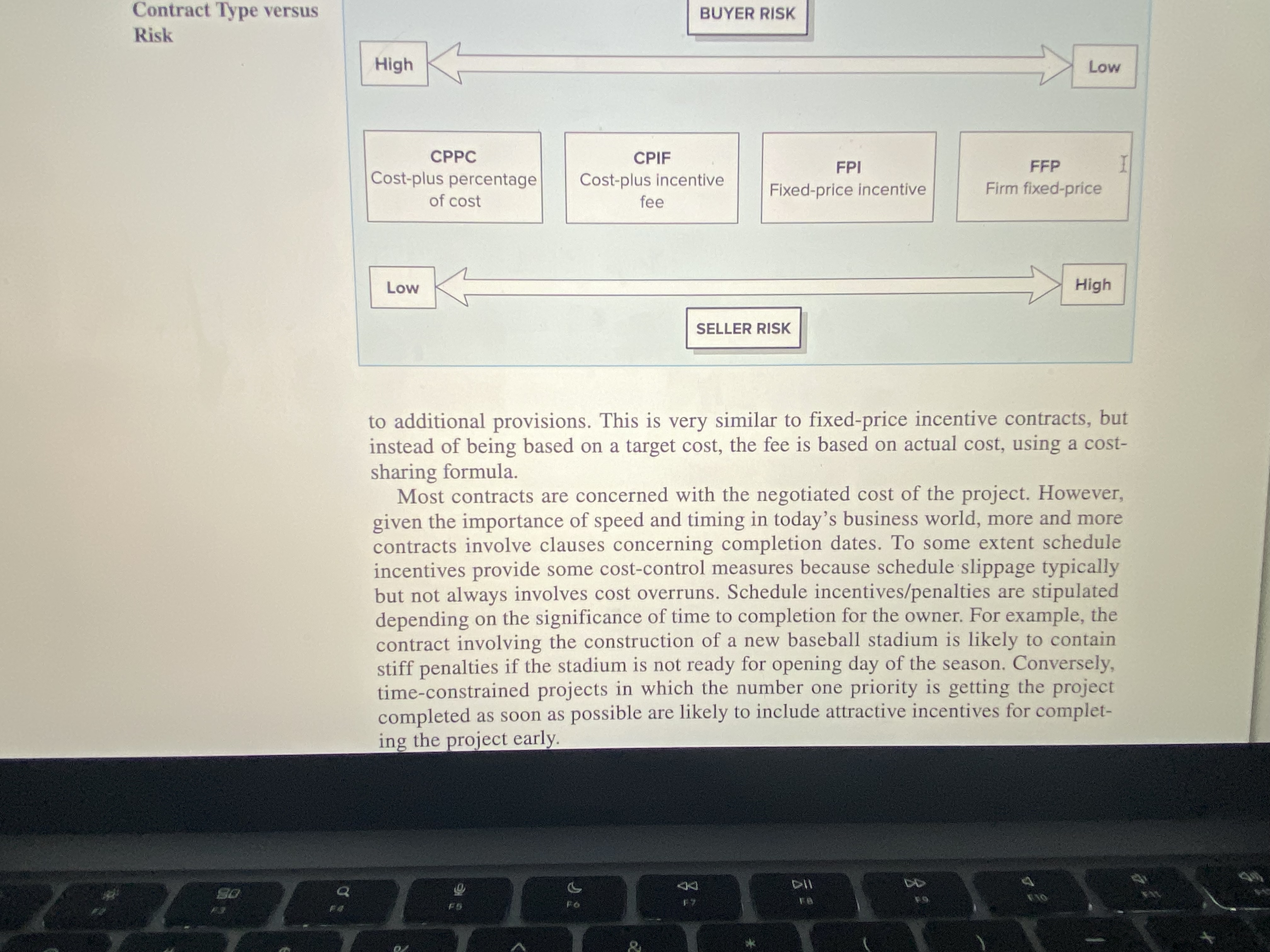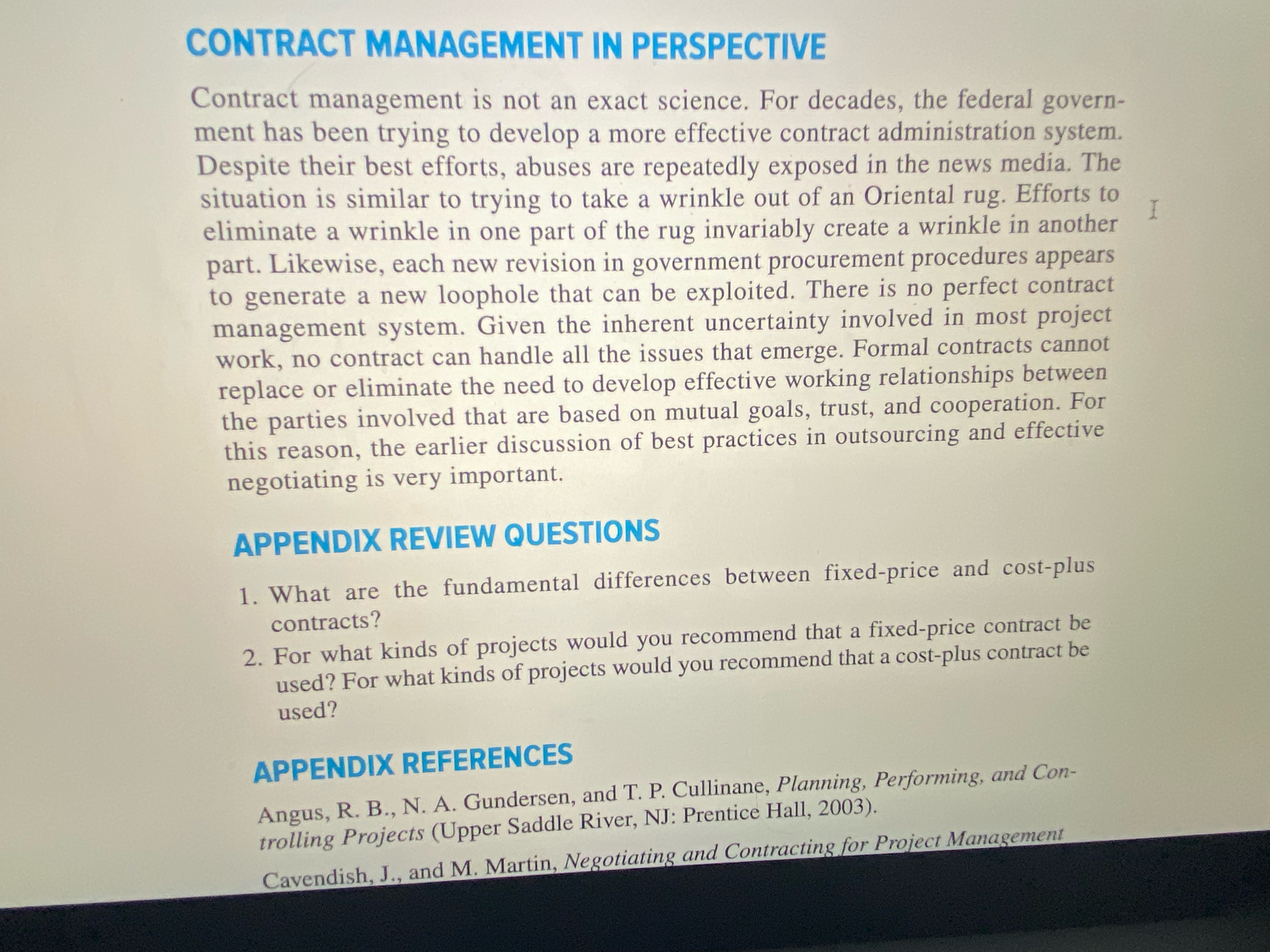T G 470 of 678 COST-PLUS CONTRACTS Apper Under a cost-plus contract the contractor is reimbursed for all direct allowable costs (materials, labor, travel) plus an additional fee to cover overhead and profit. This fee is negotiated in advance and usually involves a percentage of the total costs. On small projects this kind of contract comes under the rubric "time and materials con- tract" in which the client agrees to reimburse the contractor for labor cost and mate- rials. Labor costs are based on an hourly or daily rate, which includes direct and indirect costs as well as profit. The contractor is responsible for documenting labor and materials costs. Unlike fixed-price contracts cost-plus contracts put the burden of risk on the client. The contract does not indicate what the project is going to cost until the end of the project. Contractors are supposed to make the best effort to fulfill the spe- cific technical requirements of the contract but cannot be held liable, in spite of their best efforts, if the work is not produced within the estimated cost and time frame. These contracts are often criticized because there is little formal incentive for the contractors to control costs or finish on time because they get paid regard- less of the final cost. The major factor motivating contractors to control costs and schedule is the effect overruns have on their reputation and their ability to secure future business. The inherent weakness of cost-plus contracts has been compensated for by a variety of incentive clauses directed at providing incentives to contractors to control costs, maintain performance, and avoid schedule overruns. Contractors are reimbursed for costs, but instead of the fee being fixed, it is based on an incentive formula and subject 86 1 SEP W 12 4 XContract Type versus BUYER RISK Risk High Low CPPC CPIF FPI FFP Cost-plus percentage Cost-plus incentive Firm fixed-price of cost Fixed-price incentive fee Low High SELLER RISK to additional provisions. This is very similar to fixed-price incentive contracts, but instead of being based on a target cost, the fee is based on actual cost, using a cost- sharing formula. Most contracts are concerned with the negotiated cost of the project. However, given the importance of speed and timing in today's business world, more and more contracts involve clauses concerning completion dates. To some extent schedule incentives provide some cost-control measures because schedule slippage typically but not always involves cost overruns. Schedule incentives/penalties are stipulated depending on the significance of time to completion for the owner. For example, the contract involving the construction of a new baseball stadium is likely to contain stiff penalties if the stadium is not ready for opening day of the season. Conversely, time-constrained projects in which the number one priority is getting the project completed as soon as possible are likely to include attractive incentives for complet- ing the project early.CONTRACT MANAGEMENT IN PERSPECTIVE Contract management is not an exact science. For decades, the federal govern- ment has been trying to develop a more effective contract administration system. Despite their best efforts, abuses are repeatedly exposed in the news media. The situation is similar to trying to take a wrinkle out of an Oriental rug. Efforts to eliminate a wrinkle in one part of the rug invariably create a wrinkle in another part. Likewise, each new revision in government procurement procedures appears to generate a new loophole that can be exploited. There is no perfect contract management system. Given the inherent uncertainty involved in most project work, no contract can handle all the issues that emerge. Formal contracts cannot replace or eliminate the need to develop effective working relationships between the parties involved that are based on mutual goals, trust, and cooperation. For this reason, the earlier discussion of best practices in outsourcing and effective negotiating is very important. APPENDIX REVIEW QUESTIONS 1. What are the fundamental differences between fixed-price and cost-plus contracts? 2. For what kinds of projects would you recommend that a fixed-price contract be used? For what kinds of projects would you recommend that a cost-plus contract be used? APPENDIX REFERENCES Angus, R. B., N. A. Gundersen, and T. P. Cullinane, Planning, Performing, and Con- trolling Projects (Upper Saddle River, NJ: Prentice Hall, 2003). Cavendish, J., and M. Martin, Negotiating and Contracting for Project Management









